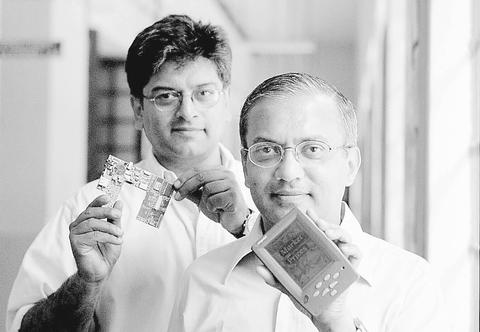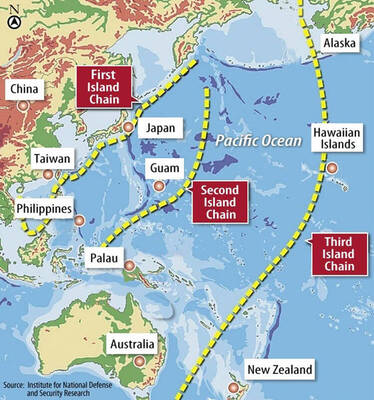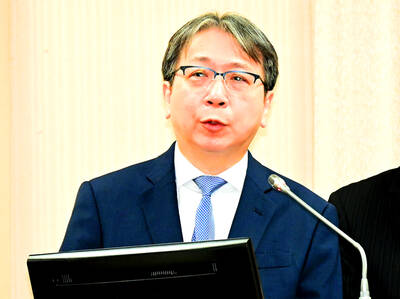Some of the world's brightest technologists hail from this south Indian city, burnishing Bangalore's reputation as the Silicon Valley of the East.
Yet for most Indians, whose average income is US$450 a year, a computer is a foreign word. Ownership is a distant dream.

PHOTO: AP
A group of seven Indian computer scientists think they can help.
They've built a simple, inexpensive handheld computer -- they call it the Simputer -- that in the words of co-developer Vinay Deshpande "could truly take the benefits of information technology to the underserved of the world."
Fewer than 1 percent of India's more than 1 billion people have personal computers.
More than 40 percent of the population is illiterate, and one in four Indians lives in abject poverty.
The idea for the Simputer, which is slated for launch by year's end, emerged from the India Institute of Science and Encore Software Ltd after both were asked by the government to devise ways to deliver information technology's benefits to rural India, where some 75 percent of the country's population lives.
Inspired by the transistor radio, which opened an information spigot to India's villages in the 1970s, the team designed a 7.5cm by 12.5cm telecommunications-ready machine.
They envision Indian farmers using it to get on the Internet via public telephones and check produce prices, government tax and land records.
Although it was designed with Indians in mind, the hope is that the Simputer will be attractive to governments, banks, relief agencies and schools in other developing countries.
"It is a big boost for Indian pride," said Deshpande, the chairman of Encore Software, one of two companies that hold the manufacturing license.
"It proves what we've been saying all along: That we can do it here. This is 100 percent India."
Swami Manohar, another of the developers and a computer science professor at IIS, said the Simputer's initial price would be around US$320. Eventually, they intend to sell it in volume at US$190.
That's still expensive for most Indians.
So the Simputer would accommodate smart cards, which each cost about US$4.25. That would enable farmers, villages or schools to share a single device, and use individual smart cards to store data.
The Simputer runs on a version of the Linux operating system, whose source code is free on the Internet. It has a 320-by-240-pixel monochrome display, is powered by a 200Mhz StrongArm processor and has a hard polymer shell.
The current prototype has 32MB of random access memory, runs on three AAA nickel metal hydride batteries, includes a built-in speaker, a microphone and a telephone jack, and USB and smart card connectors. Into the software bundle are a built-in Internet browser, e-mail program, MP3 player and a modem.
Because it runs on Linux, programmers working through the nonprofit Simputer Trust can improve on the machine's codes and capabilities. On their Web site, the developers say the trust aims to promote the Simputer "as an evolving platform for social change.''
Since many of its users would be illiterate, the Simputer has text-to-speech capability and voicemail.
It is designed to break down written words into basic sounds, then put them back together and speak out in English, Hindi, Tamil and Kannada.
Users can also enter text on a soft screen keyboard, one character at a time, or with a stylus using a handwriting recognition program the designers call "Tapatap"' -- (akin to Graffiti in the Palm OS).
The Simputer Trust does not intend to manufacture the device, only license its design. It plans to charge US$25,000 to commercial producers in developing countries and US$250,000 to manufacturers in developed nations.
"This is a world-class product, ahead of anything being done anywhere else in the world," said Kenneth Keniston, director of the India Program at the Massachusetts Institute of Technology.
The Simputer is not, however, the only cheap computer out there.
In Brazil, computer scientists at Federal University of Minas Gerais have developed a prototype of a PC for the people -- dubbed the Volkscomputer -- which they envision will sell for US$300.
But it's not portable, making it more difficult to share among communities.
The Simputer's developers scrounged for grants and credit the university for giving them lab space and research and development time.
And they don't pretend they don't hope to get rich off the Simputer one day.
The men who built the handheld put in much of their own time and money, and the four computer scientists at the Indian Institute of Science, considered the MIT of the East, earn some US640 monthly and have put most of their other research on hold.
"Not to mention that we haven't seen our families," said V. Vinay, one of the professors. "We're not looking at the retail market, but we're not going to ignore it either."
Deshpande, the software and marketing man of Simputer, agrees: "We hope to make money in the long run."

The US government has signed defense cooperation agreements with Japan and the Philippines to boost the deterrence capabilities of countries in the first island chain, a report by the National Security Bureau (NSB) showed. The main countries on the first island chain include the two nations and Taiwan. The bureau is to present the report at a meeting of the legislature’s Foreign Affairs and National Defense Committee tomorrow. The US military has deployed Typhon missile systems to Japan’s Yamaguchi Prefecture and Zambales province in the Philippines during their joint military exercises. It has also installed NMESIS anti-ship systems in Japan’s Okinawa

‘WIN-WIN’: The Philippines, and central and eastern European countries are important potential drone cooperation partners, Minister of Foreign Affairs Lin Chia-lung said Minister of Foreign Affairs Lin Chia-lung (林佳龍) in an interview published yesterday confirmed that there are joint ventures between Taiwan and Poland in the drone industry. Lin made the remark in an exclusive interview with the Chinese-language Liberty Times (the Taipei Times’ sister paper). The government-backed Taiwan Excellence Drone International Business Opportunities Alliance and the Polish Chamber of Unmanned Systems on Wednesday last week signed a memorandum of understanding in Poland to develop a “non-China” supply chain for drones and work together on key technologies. Asked if Taiwan prioritized Poland among central and eastern European countries in drone collaboration, Lin

ON ALERT: Taiwan’s partners would issue warnings if China attempted to use Interpol to target Taiwanese, and the global body has mechanisms to prevent it, an official said China has stationed two to four people specializing in Taiwan affairs at its embassies in several democratic countries to monitor and harass Taiwanese, actions that the host nations would not tolerate, National Security Bureau (NSB) Director-General Tsai Ming-yen (蔡明彥) said yesterday. Tsai made the comments at a meeting of the legislature’s Foreign Affairs and National Defense Committee, which asked him and Minister of National Defense Wellington Koo (顧立雄) to report on potential conflicts in the Taiwan Strait and military preparedness. Democratic Progressive Party (DPP) Legislator Michelle Lin (林楚茵) expressed concern that Beijing has posted personnel from China’s Taiwan Affairs Office to its

BACK TO WORK? Prosecutors said they are considering filing an appeal, while the Hsinchu City Government said it has applied for Ann Kao’s reinstatement as mayor The High Court yesterday found suspended Hsinchu mayor Ann Kao (高虹安) not guilty of embezzling assistant fees, reducing her sentence to six months in prison commutable to a fine from seven years and four months. The verdict acquitted Kao of the corruption charge, but found her guilty of causing a public official to commit document forgery. The High Prosecutors’ Office said it is reviewing the ruling and considering whether to file an appeal. The Taipei District Court in July last year sentenced Kao to seven years and four months in prison, along with a four-year deprivation of civil rights, for contravening the Anti-Corruption